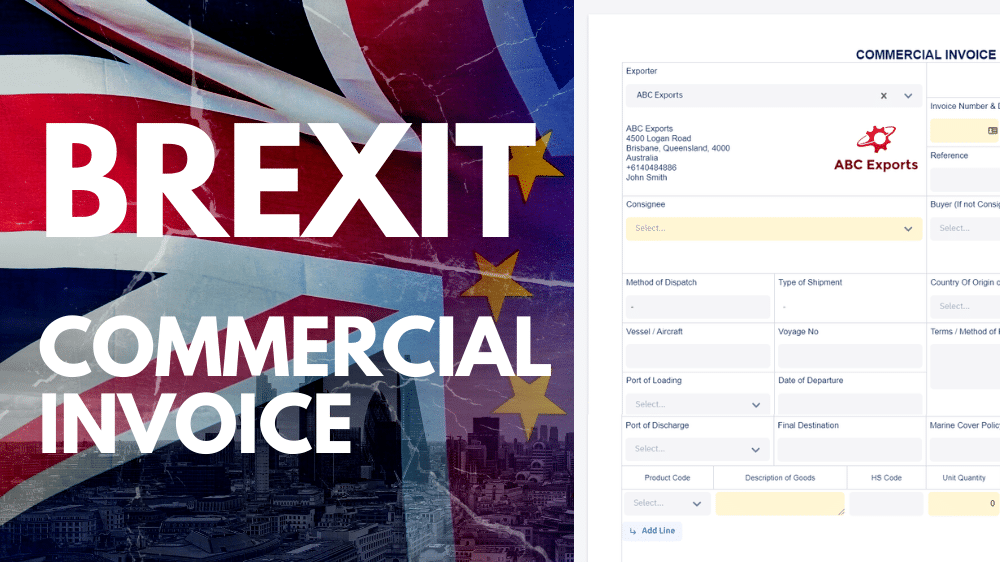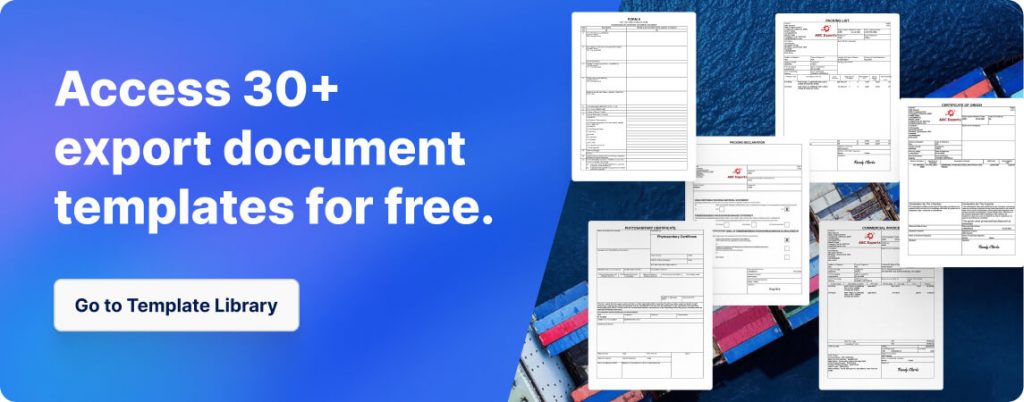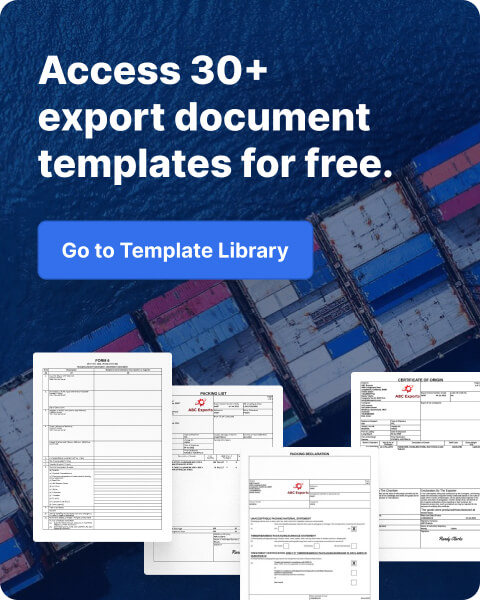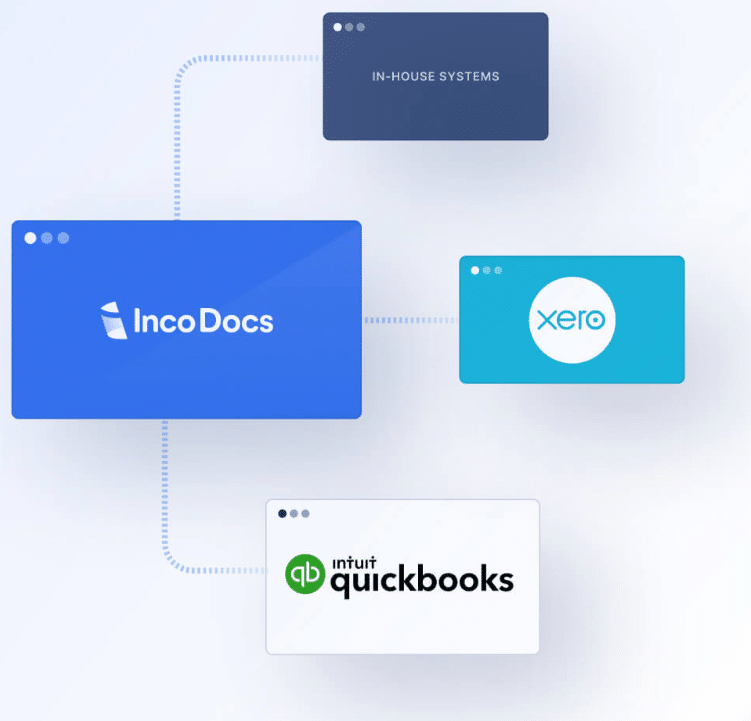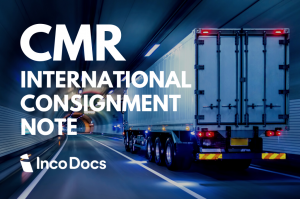Guide to Create and Download a Commercial Invoice document for Brexit
From 1st January 2021, shipments into and out of the United Kingdom will require detailed Commercial Invoice documents and other shipping documentation to meet new Brexit regulations. As an exporter, you will be required to provide export documentation for Brexit such as Commercial Invoices, Packing Lists, Declarations, Certificates and more, so that products can be cleared through customs without delays.
Therefore it’s important that the Commercial Invoice template for Brexit contains all of the required information and fields. If documentation is missing fields and information, it can cause costly delays, fines or missed shipments. To ensure compliance, a Commercial Invoice template must contain all product and transaction information, HS codes, Incoterm®, details of the exporter & consignee (with EORI number if applicable) and shipping details such as type of shipment, port of loading and port of discharge.
Watch below how shippers use IncoDocs to create and download a Commercial Invoice template for Brexit.
A Breakdown of a Commercial Invoice Template for Brexit
As mentioned above, it’s important that exporters include all information on the Commercial Invoice template for Brexit to avoid having issues or delays when transporting the goods through customs. Shippers use IncoDocs to create and download their Commercial Invoice and Packing List templates online.
We’ve split the Commercial Invoice into sections to make it easy to understand where relevant fields and information is required. Starting at the top left is the details of the Exporter of the goods.
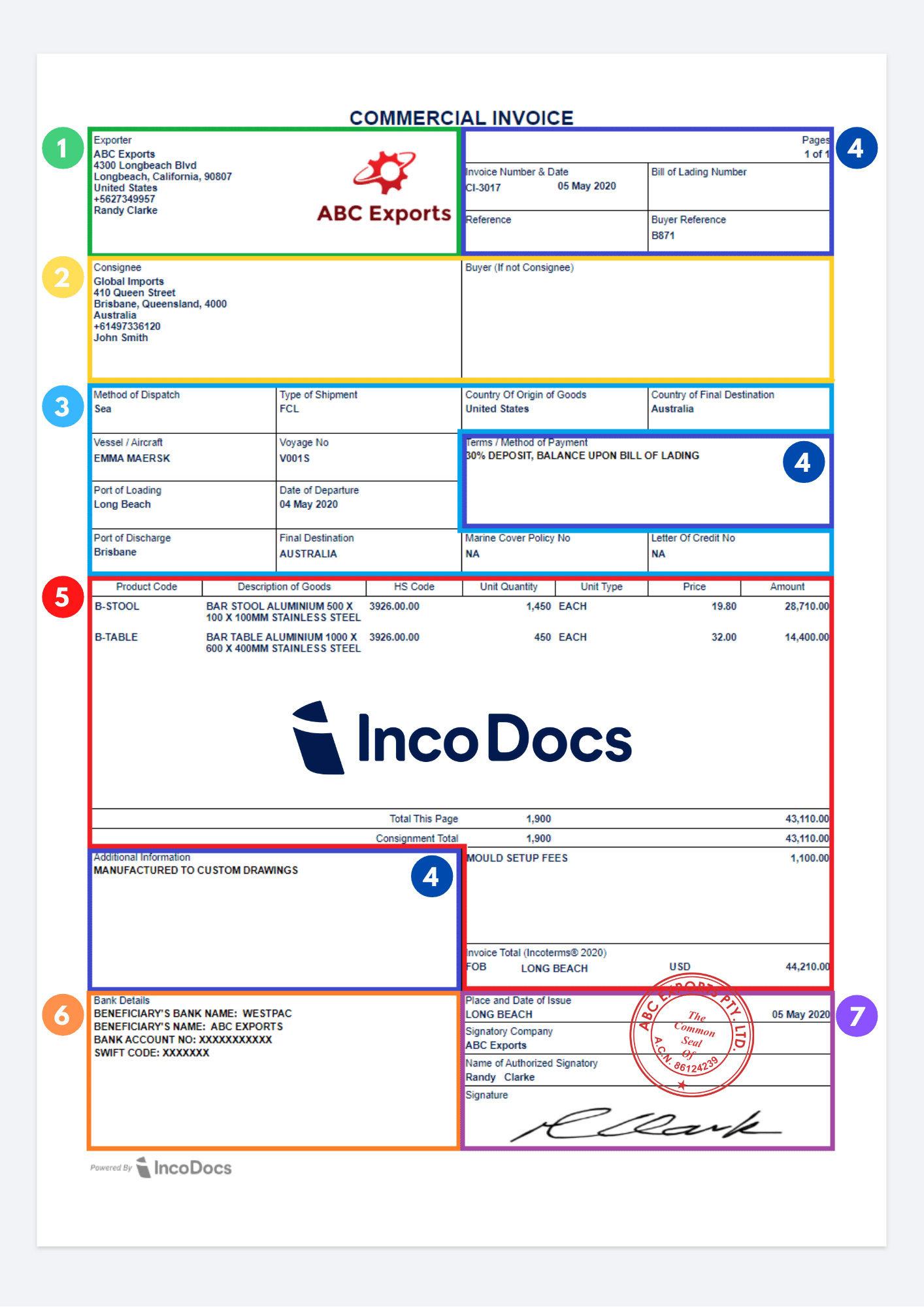
1 – Exporter’s Details
This includes basic company contact information including company name, logo, address, phone numbers and personal contact details. Note that you can add the relevant EORI number here.
You can obtain an EORI number in the UK at this link here.
You can lookup and validate EORI numbers at this link here.
2 – Consignee & Buyer (if not Consignee)
This includes basic company contact information including company name, address, phone numbers and personal contact details.
3 – Shipping Details
Important shipping and logistics details are included to help the consignee, logistics companies and customs brokers to correctly arrange the transportation, customs clearance and final delivery of goods. Shipping details include:
- Method of Dispatch – Road, Rail, Air or Sea Freight
- Type of shipment – FCL, LCL, Breakbulk or other
- Country of Origin
- Country of Final Destination (where the goods are delivered through to final address)
- Vessel / Aircraft Name
- Voyage No
- Port of Loading (POL)
- Port of Discharge (POD)
- Final Destination (Country)
- Marine Cover Policy No (if applicable)
- Letter of Credit No (if goods are sold under a Letter of Credit)
4 – Reference Numbers & Additional Information
These sections includes reference numbers, dates and additional information:
- Seller’s Invoice number
- Date (when invoice is issued)
- Bill of Lading Number (if known)
- Buyer reference number (usually the buyer’s Purchase Order number)
- Additional Reference (if needed)
- Terms/method of payment (the methods of payment and payment terms, i.e. 30% deposit, 70% balance upon Bill of Lading)
- Additional details (any packaging, delivery notes or additional details)
5 – Product Details
The exporter will add a detailed list of the products that have been sold. This includes important information such as:
- Product Code (unique product reference number)
- Description of goods (detailed)
- HS Code (to classify goods through customs clearance)
- Unit Quantity
- Unit Type
- Price (per unit type)
- Any additional fees or charges (usually mould, setup fees, transport costs or taxes)
- Incoterm® & Place – The selling term and place agreed between the buyer and seller
- Currency of transaction
6 – Bank Details (Optional)
The seller’s detailed bank information. This usually includes:
Beneficiary Details
- Beneficiary Business Name
- Beneficiary Business Address
Payee Bank Details
- SWIFT Code (Bank ID). Each financial institution in the SWIFT network has a unique SWIFT code that is between 8 and 11 characters. This is known as a SWIFT ID or a bank identifier code (BIC). You can lookup a SWIFT/BIC Code here. For example, to make a Bank of America wire transfer, the Bank of America SWIFT code is BOFAUS3N
- Bank Location (Country)
- Bank Location (City)
- Bank Name
- Intermediary Bank Details (optional). If the seller uses an Intermediary bank to accept payments, the Intermediary bank details should also be included, i.e. SWIFT Code (Bank ID) Bank Location (Country), Bank Location (City), Bank Name.
- IBAN – International Bank Account Number
